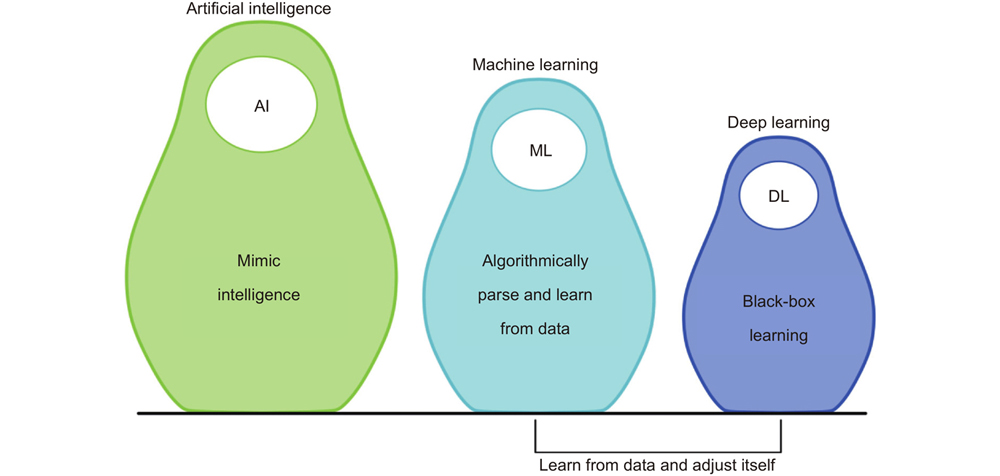[10] Mohri M, Rostamizadeh A, Talwalkar A. FoundationsofMachineLearning (MIT Press, Cambridge, 2018).
[13] Tanaka A, Tomiya A, Hashimoto K. DeepLearningandPhysics (Springer, Singapore, 2021);https://doi.org/10.1007/978-981-33-6108-9.
[14] Miyanawala TP, Jaiman RK. An efficient deep learning technique for the navier-stokes equations: application to unsteady wake flow dynamics. ArXiv: 1710.09099 (2018).
[15] Lucor D, Agrawal A, Sergent A. Physics-aware deep neural networks for surrogate modeling of turbulent natural convection. ArXiv: 2103.03565 (2021).
[16] Lim J, Psaltis D. MaxwellNet: physics-driven deep neural network training based on Maxwell’s equations. ArXiv: 2107.06164 (2021).
[18] Goodfellow I, Bengio Y, Courville A. DeepLearning (MIT Press, Cambridge, 2016).
[21] Simonyan K, Zisserman A. Very deep convolutional networks for large-scale image recognition. In Proceedings of the 3rd International Conference on Learning Representations (ICLR, 2015).
[22] Brown TB, Mann B, Ryder N, Subbiah M, Kaplan J et al. Language models are few-shot learners. In Proceedings of the 34th Conference on Neural Information Processing Systems (NeurIPS, 2020).
[23] van Oord A, Kalchbrenner N, Kavukcuoglu K. Pixel recurrent neural networks. In Proceedingsofthe33rdInternationalConferenceonMachineLearning 1747–1756 (PMLR, 2016).
[37] Qiu CK, Luo Z, Wu X, Yang HD, Huang B. Inverse design of multilayer nanoparticles using artificial neural networks and genetic algorithm. ArXiv: 2003.08356 (2020).
[44] Guo R, Lin ZC, Shan T, Song XQ, Li MK et al. Physics embedded deep neural network for solving full-wave inverse scattering problems. IEEETransAntennasPropag (2021); https://doi.org/10.1109/TAP.2021.3102135.
[54] Elzouka M, Yang C, Albert A, Lubner S, Prasher RS. Interpretable inverse design of particle spectral emissivity using machine learning. ArXiv: 2002.04223 (2020).
[75] Ghorbani F, Shabanpour J, Beyraghi S, Soleimani H, Oraizi H et al. A deep learning approach for inverse design of the metasurface for dual-polarized waves. ArXiv: 2105.08508 (2021).
[78] Zandehshahvar M, Kiarashi Y, Zhu ML, Maleki H, Brown T et al. Manifold learning for knowledge discovery and intelligent inverse design of photonic nanostructures: breaking the geometric complexity. ArXiv: 2102.04454 (2021).
[80] Naseri P, Pearson S, Wang ZZ, Hum SV. A combined machine-learning/optimization-based approach for inverse design of nonuniform bianisotropic metasurfaces. ArXiv: 2105.14133 (2021).
[113] McManamon PF. LiDARTechnologiesandSystems (SPIE Press, Bellingham, 2019).
[121] Vulpetti G, Johnson L, Matloff GL. SolarSails: ANovelApproachtoInterplanetaryTravel (Springer, New York, 2015);https://doi.org/10.1007/978-1-4939-0941-4.
[127] Kudyshev ZA, Kildishev AV, Shalaev VM, Boltasseva A. Optimizing Startshot lightsail design: a generative network-based approach. ArXiv: 2108.12999 (2021).
[131] Abdollahramezani S, Hemmatyar O, Taghinejad M, Taghinejad H, Krasnok A et al. Electrically driven programmable phase-change meta-switch reaching 80% efficiency. ArXiv: 2104.10381 (2021).
[138] Son H, Kim SJ, Hong J, Sung J, Lee B. Design of highly perceptible dual-resonance all-dielectric metasurface colorimetric sensor via deep neural networks. (2021);https://doi.org/10.21203/rs.3.rs-801301/v1.
[142] Torun H, Bilgin B, Ilgu M, Yanik C, Batur N et al. Machine learning detects SARS-CoV-2 and variants rapidly on DNA aptamer metasurfaces. medRxiv (2021);https://doi.org/10.1101/2021.08.07.21261749.
[144] Ren ZH, Zhang ZX, Wei JX, Dong BW, Lee C. Mid-infrared nanoantennas as ultrasensitive vibrational probes assisted by machine learning and hyperspectral imaging. (2021);https://doi.org/10.21203/rs.3.rs-209363/v1.
[147] Kwekha-Rashid AS, Abduljabbar HN, Alhayani B. Coronavirus disease (COVID-19) cases analysis using machine-learning applications. ApplNanosci (2021);https://doi.org/10.1007/s13204-021-01868-7.
[162] Banerji S, Majumder A, Hamrick A, Menon R, Sensale-Rodriguez B. Machine learning enables ultra-compact integrated photonics through silicon-nanopattern digital metamaterials. ArXiv: 2011.11754 (2020).
[164] Abdullah M, Koziel S. Supervised-learning-based development of multibit RCS-reduced coding metasurfaces. IEEETransMicrowTheoryTech (2021);https://doi.org/10.1109/TMTT.2021.3105677.
[171] Alexandropoulos GC, Shlezinger N, Alamzadeh I, Imani MF, Zhang HY et al. Hybrid reconfigurable intelligent metasurfaces: enabling simultaneous tunable reflections and sensing for 6G wireless communications. ArXiv: 2104.04690 (2021).
[182] Cui TJ, Liu C, Ma Q, Luo ZJ, Hong QR et al. Programmable artificial intelligence machine for wave sensing and communications. (2020); https://doi.org/10.21203/rs.3.rs-90701/v1.
[185] Saigre-Tardif C, Faqiri R, Zhao HT, Li LL, del Hougne P. Intelligent meta-imagers: from compressed to learned sensing. ArXiv: 2110.14022 (2021).
[189] Luo XH, Hu YQ, Li X, Ou XN, Lai JJ et al. Metasurface-enabled on-chip multiplexed diffractive neural networks in the visible. ArXiv: 2107.07873 (2021).
[198] Chen M, Zandehshahvar M, Kiarashinejad Y, Hemmatyar O, Umapathy D et al. Inverse design of nanophotonic structures using a hybrid dimensionality reduction technique. In Proceedings of FrontiersinOptics/LaserScience FM2A. 1 (Optical Society of America, 2020);https://doi.org/10.1364/FIO.2020.FM2A.1.
[202] Ma XZ, Ma Y, Cunha P, Liu QS, Kudtarkar K et al. A universal deep learning strategy for designing high-quality-factor photonic resonances. ArXiv: 2105.03001 (2021).
[207] Schuman CD, Potok TE, Patton RM, Birdwell JD, Dean ME et al. A survey of neuromorphic computing and neural networks in hardware. ArXiv: 1705.06963 (2017).
[213] Wright LG, Onodera T, Stein MM, Wang TY, Schachter DT et al. Deep nonlinear optical neural networks using physics-aware training. In Proceedings of ConferenceonLasersandElectro-Optics FF1A. 4 (Optical Society of America, 2021);https://doi.org/10.1364/CLEO_QELS.2021.FF1A.4.
[214] Majumdar A. Metaphotonic computational image sensors. In Proceedings of ImagingandAppliedOpticsCongress IW1D. 3 (Optical Society of America, 2020);https://doi.org/10.1364/ISA.2020.IW1D.3.
[225] Gupta RK, Everett JL, Tranter AD, Henke R, Gokhroo V et al. Machine learner optimization of optical nanofiber-based dipole traps for cold 87Rb atoms. ArXiv: 2110.03931 (2021).




